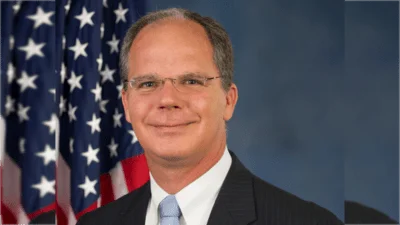The 2018 Interior and Environment Appropriations bill would place the health and safety of the American people at risk by slashing critical funding for climate change and environmental enforcement which threatens lives and livelihoods. Ideological policy riders continue the assault on our environment by undermining the Administration’s ability to keep our land, water, and air clean and protect threatened species.
2018 Interior and Environment Appropriations Act
2018 mark: $31.456 billion
2018 budget request: $27.199 billion
2017 enacted: $32.280 billion
The Chairman’s mark provides:
* $7.530 billion for the Environmental Protection Agency (EPA), which is $528 million less than the 2017 enacted level and $1.875 billion above the President’s budget request.
** $1.144 billion for the Clean Water Fund, which is $250 million less than the 2017 enacted level and $250 million below the President’s budget request.
** $863 million for the Safe Drinking Water Fund, which is equal to the 2017 enacted level and equal to the President’s budget request.
* $1.173 billion for the Bureau of Land Management, which is $46 million less than the 2017 enacted level and $133 million above the President’s budget request.
* $1.481 billion for the Fish and Wildlife Service, which is $38 million less than the 2017 enacted level and $179 million above the President’s budget request.
* $2.867 billion for the National Park Service, which is $65 million less than the 2017 enacted level and $314 million above the President’s budget request.
* $1.039 billion for the U.S. Geological Survey, which is $46 million less than the 2017 enacted level and $117 million above the President’s budget request.
* $2.869 billion for the Bureau of Indian Affairs, which is $10 million more than the 2017 enacted level and $381 million above the President’s budget request.
* $3.442 billion for Wildland Fire Management, which includes the 10-year average for fire suppression costs.
* $2.734 billion for the U.S. Forest Service (non-fire), which is $307 million more than the 2017 enacted level and $512 million above the President’s budget request. A significant portion of the increase is due to the acceptance of the budget proposal to move Hazardous Fuels to the National Forest System from Wildland Fire Management and to account for “Base 8" staff costs in the preparedness budget line item.
* $5.137 billion for the Indian Health Service, which is $97 million more than the 2017 enacted level and $397 million above the President’s budget request.
* $145 million each for the National Endowment for the Arts and the National Endowment for the Humanities, which is $5 million less than the 2017 enacted levels and rejects the President’s budget proposal to eliminate the Agencies.
* $275 million for the Land and Water Conservation fund, which is $125 million less than the FY 2017 enacted level and $211 million above the President’s budget request.
* $465 million in discretionary appropriations for Payment in Lieu of Taxes (PILT), the FY 2017 enacted level, (this program was authorized as mandatory spending from FY 2008 to FY 2014).
The Chairman’s mark includes numerous policy riders, including:
* Prohibiting the Fish and Wildlife Service from revisiting the status of the Sage Grouse on the Endangered Species list.
* Prohibiting listing of Trestles Historic District, San Diego County, California, on the National Register of Historic Places.
* Requiring the Secretary of the Interior to reissue final rules to delist wolves in Wyoming and the Great Lakes region that were overturned by a federal court and exempts those reissued rules from judicial review.
* Prohibiting funds to treat any gray wolves, (including the Mexican wolf) range-wide in the lower 48 contiguous States and D.C. as endangered or threatened species.
* Prohibiting the use of funds to regulate the lead content of ammunition or fishing tackle.
* Prohibiting the use of funds to further implementation of the National Ocean Policy under Executive Order 13547.
* Requiring the EPA to treat air emissions from forest biomass activities as non-contributors of carbon dioxide in the atmosphere.
* Prohibiting the use of funds to require permits for the discharge of dredged or fill material for certain agricultural activities.
* Authorizing the withdrawal of the Waters of the United States Rule without regard to any provision of statute or regulation that establishes a requirement for such withdrawal.
* Delaying submission of State Implementation Plans for the national ambient air quality standards for ozone until 2026.
* Prohibiting EPA from ensuring mining companies are financially capable of cleaning up pollution that operations cause to the land and water.
* Prohibiting the use of funds to issue any regulation under the Solid Waste Disposal Act that applies to an animal feeding operation.
Source: U.S. Department of HCA









